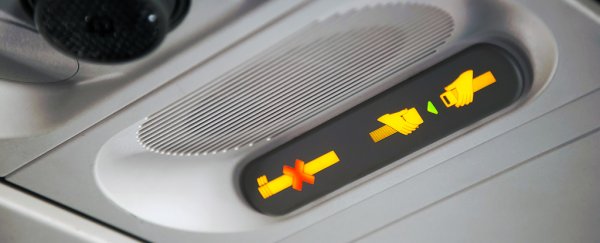It's always unnerving to experience turbulence on a flight, even though it's not all that dangerous if you're properly buckled up.
Now scientists have found that we can expect dramatically more turbulence in the years to come, and it's not going to be just mild rattling - we're talking serious shaking here, the kind that tosses people all over the plane.
Turbulence comes in four grades, ranging from light to extreme. This new study is the first time scientists have examined the future of severe turbulence in response to climate change, and it's not looking good.
"Even the most seasoned frequent fliers may be alarmed at the prospect of a 149 percent increase in severe turbulence," says atmospheric scientist Paul Williams from the University of Reading, UK.
Considering that the definition of severe turbulence includes the sentence "aircraft may be momentarily out of control," this news is indeed alarming.
Turbulence can happen for many reasons, including thunderstorms, clouds, changes in atmospheric pressure or the switch between cold and warm weather fronts.
But sometimes it unpredictably hits when the skies are totally clear.
This 'clear-air turbulence' actually happens when an aircraft hits patches of different vertical wind speeds (wind shear) within a jet stream. And according to Williams, those wind shears are going to get stronger and more unstable due to climate change.
Williams plugged the data of 21 different turbulence models into a supercomputer, and projected a doubling of atmospheric CO2 compared to pre-industrial levels. The results of these simulations showed an unsettling increase of all grades of turbulence.
In the coming decades, if you're on a transatlantic flight cruising at a standard altitude of 12 kilometres (7.4 miles), you can expect light turbulence to increase by 59 percent and moderate turbulence by 94 percent.
But worst of all, severe turbulence is projected to become two-and-a-half times more common - a whopping 149 percent.
This is going to have serious consequences on air travel. Modern planes are built to withstand even severe turbulence (phew), but such encounters can still cause delays, diversions, and increased plane inspection times between flights.
And keeping that seatbelt fastened will become more important than ever, unless you want a concussion.
"The risk of injuries, although small, is real," Williams writes in a blog post for Carbon Brief. "Serious injuries and fatalities can be caused by severe turbulence, which propels people and objects around with a force stronger than gravity."
The next step for researchers is to extend the study to include more regions of the world, other seasons (Williams only looked at wintertime) and other flight altitudes.
"These comparisons are likely to require interdisciplinary collaborations between climate scientists, turbulence scientists, and airlines," writes Williams.
All this might sound like terrible news for people who are already uneasy about flying, but thankfully there's a silver lining. Right now clear-air turbulence is frustratingly difficult to predict (and therefore avoid), but there is hope that future aircraft will be equipped with better sensors.
One hopeful option is LIDAR (Light Detection and Ranging), the ultra-cool laser detecting technology that has already helped scientists discover ancient cities and hidden reefs.
"Forward-looking LIDAR could forewarn pilots of any invisible density perturbations indicative of clear-air turbulence up to 10-15 km (6-9 miles) ahead, potentially with enough lead time to alert passengers and crew or even to attempt an evasive manoeuvre," Williams writes in the paper.
But we'll have to wait for LIDAR to become less expensive before all planes can be equipped with this amazing tech.
Until then, it's probably best to keep cutting back on CO2 emissions and stock up on some barf bags. It looks like we'll be needing those.
The study was published in Advances in Atmospheric Sciences.
